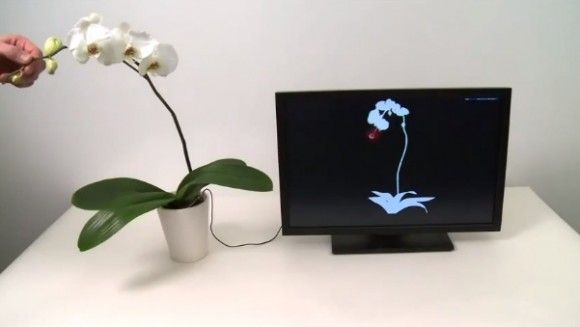Disney Researchers Turn Plants Into Multitouch Controllers
Designed in Disney's research lab, the Botanicus Interactus system brings out the possibilities in complex multitouch interactive controllers. By incorporating a single electrode placed in the soil of real or artificial house plants, the system is able to detect where and how the plant is being touched, effectively turning a plant unto a multitouch controller.
The system utilizes Swept Frequency Capacitive Sensing (SFCS), a process similar to what is involved in capacitive touch sensing. The only difference is that SFCS is capable of detecting a wide range of frequencies compared to capacitive's ability to detect a single frequency. This allows the Botanicus Interactus to determine things such as location of the touch, and exact nature of the touch whether it be a stroke tap or squeeze.
In addition, the technology even allows the device to detect when a person's finger is close to the plant, without even touching it. Although the technology might not be appealing for everyday computing purposes, it opens the door to a broad range of possibilities, one of which can be seen at the SIGGRAPH Emerging Technology conference in Los Angeles where an entire garden of interactive plants utilizing the technology is on display.
Contact Us for News Tips, Corrections and Feedback
Get Tom's Hardware's best news and in-depth reviews, straight to your inbox.
-
jhansonxi I can see some uses for it:Reply
Interactive music at gardens.
Paranoid gardeners protecting their plants or farmers protecting their crops.
Detect when the cat uses your plant for a litter box.
Camouflaged perimeter defences around fortifications.
Not to mention a whole bunch of practical jokes. -
groveborn I wonder when this will be changed to work on people (or other animals). I mean, it works on plants, why not animals? Definitely entertaining.Reply -
archange And I'm sure the plants love it :PReply
Jokes aside, this is really interesting. Leaving plants alone though, weren't there already experiments that used the human skin as a controller for devices?

